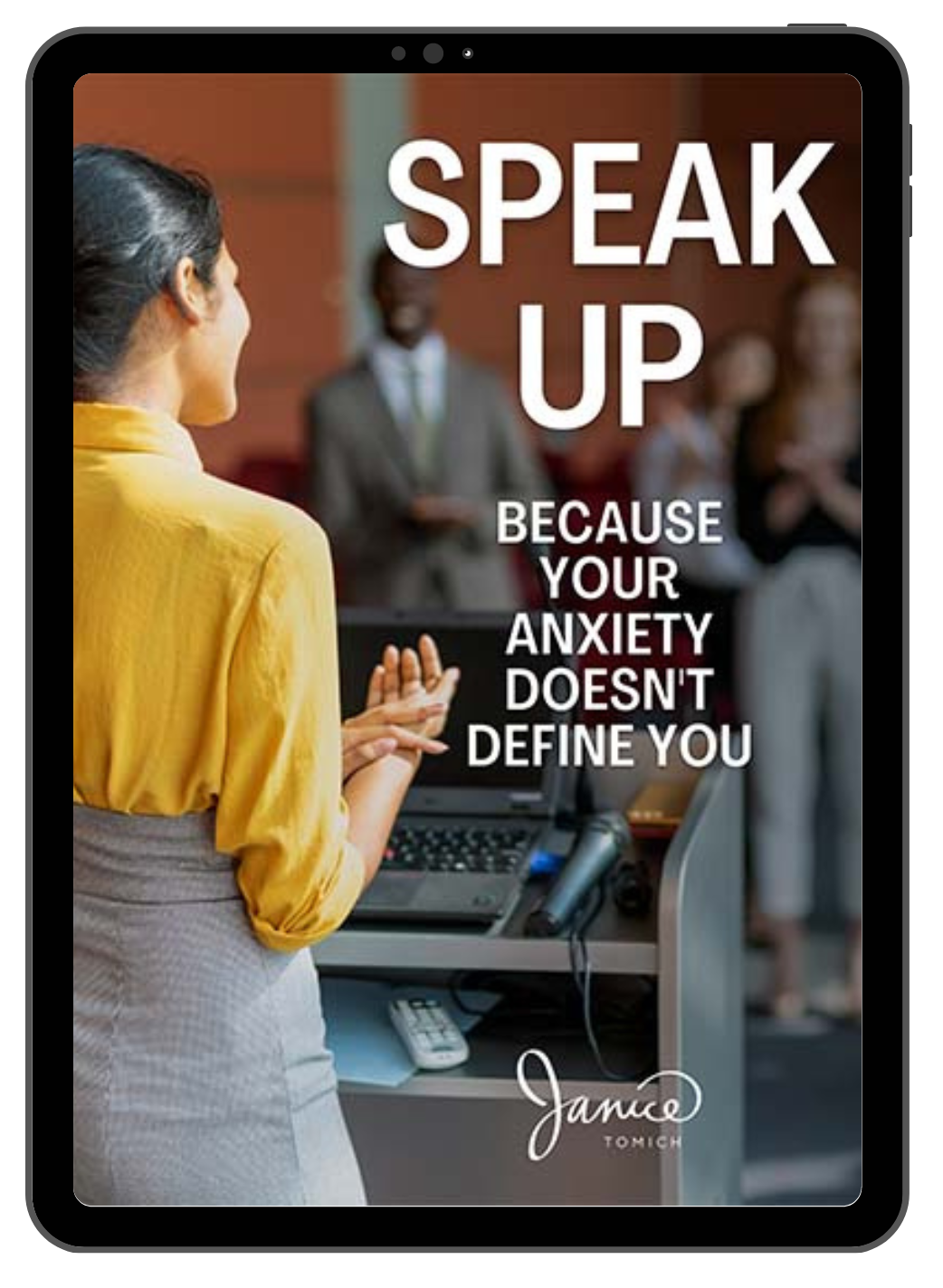There’s nothing more frustrating than having great ideas, but every time you try to speak up you lose people’s attention because you’re too long-winded or go off on rambling tangents.
An inability to speak clearly and concisely is a common reason my communication coaching clients reach out to work with me.
They tell me how frustrated they are. That their words and ideas get all jumbled inside their head. That they can’t seem to articulate their thoughts logically or succinctly, no matter how hard they try.
The good news is that speaking clearly, like any other skill, is something anyone can learn. It just takes practice.
Table of Contents
Why Does Speaking Clearly and Concisely Matter?
Speaking clearly and concisely simply means using the right words at the right time. Clear speaking comes from clear thinking. Once you’ve mastered the art of concise communication, you’ll find that each word has greater impact.
Effective verbal communication skills are important for managers, directors, executives and anyone else who needs to influence and persuade others. Speaking clearly is an important part of a leader’s executive presence.
Professionals that have a talent to strip facts to their essence and eschew unnecessary words show their prowess as communicators. This is especially important when you have an especially time-sensitive audience, such as when you’re presenting to executives.
“The most valuable of all talents is that of never using two words when one will do.”
~Thomas Jefferson
Can You Learn to Speak Concisely?
For some people speaking clearly while public speaking and in everyday conversations comes easily, but that’s not the case for everyone.
Most people can remember a time when they rambled on and felt the effects. Perhaps you noticed the tell-tale body language of not being listened to—your interlocutor’s eyes turning away, looks of exasperation in the audience. Maybe someone even just bluntly told you to “get to the point.”
But anyone can learn to be more more concise. All it takes is awareness, a desire to improve, and some practice.

There’s a common misunderstanding if we add more or give more than is expected we will hit the target. We imagine that if we say everything at least one of our ideas will land.
So we provide too much context. We go off on tangents. Finally, we get to the point. This approach is ill-advised, if well meaning.
You’ve likely heard that attention spans have deteriorated to nearly that of goldfish. Research shows it’s actually not true.
Attention spans are sophisticated. Every day we are inundated with more information than we can handle. As a coping strategy, we are quick to tune out anything we’re not interested in, especially if it does not engage us quickly.
Being long winded can even stall your career growth. Plum jobs or promotions require you to speak clearly and concisely, because it’s the only way you’ll actually be able to persuade those you’re talking with.

Pro Tip: The higher the level of a professional within an organization, the higher the expectation that your communication to be clear and concise.
6 Step Process to Teach Yourself How to Speak Clearly
- Choose a topic you know well and are passionate about.
- Record yourself speaking on the topic (audio or video, whatever feels the most natural to you). Don’t overthink what words to use, or even the structure of your speaking. Simply talk through your thoughts naturally.
- Continue speaking until you feel you’ve explained it well.
- Now, play back the recording, using a learner’s ear and perspective. Identify the points in your presentation where you could have scaled back your speech. What points were extraneous, that weren’t necessary for understanding? Was there too much repetition? Did your first sentences succinctly and compellingly introduce your topic, or did it take a long time to get to the “point” of your speech?
- Record your speech a second time, this time eliminating the words you determined that, upon consideration, you didn’t actually need to say to get your point across.
- Finally, listen to your revised speech. How did you do? Were you able to get your point across with fewer words?
Feedback is crucial to improving your ability to get your point across quickly. You may be nervous or shy to ask for presentation feedback from colleagues or friends, but the self-critique process above is an easy way to start.
And don’t worry, almost all my communication coaching clients tell me they “hate” watching themselves on video and dislike hearing audio recordings of their voice. It’s important to get over this fear, however, because recorded feedback is one of the best tools to improve your communication skills.
The key to this exercise is to really embrace a learner’s mindset. Separating yourself from your ego is hard, but it’s the only way to reap the benefits of this simple exercise to learn how to speak more concisely—and be heard.
Strategy for Planning and Executing Clear, Concise Prepared Speeches
A key element to concise, clear speaking is planning out what you’re going to say. Here’s a quick, simple worksheet you can use to help you develop your next speech.
It’s based on my this simple roadmap:
- Determine your intention & audience
- Establish your key message (only one).
- Create an opening that hooks your audience in quickly.
- Support your key message with three major proof points
- Depending on the length of your speech, support your proof points with up to three sub-points of evidence.
- Close powerfully. Drive home your call to action.
What’s important to note is the role of three concepts in building your speech content. Your audience can only take in so much information. By limiting yourself to a maximum of three major proof points, you’ll make it easy for them to follow along.
Framework for Speaking Concisely in Spontaneous, Off-The-Cuff Conversations
Meetings, phone conversations, and job interviews require you to be on our toes and respond quickly. The techniques you’ll use to speak clearly in these situations is different, but this, too, is a learnable skill. There’s no need to search for words (or overuse filler words like um, like, and ahh).
There’s no need to panic. Here is a framework you can use to keep you on track. It’s the framework I use with my clients for mastering impromptu speaking skills, and it’s based off of a system developed by Matt Abraham, a lecturer on organizational behavior at Stanford University and author of Speaking Up.
I call my framework the CPBS framework, which highlights the four elements—Context, Problem, Solution, and Benefit.
- Context: It’s important to keep the context succinct. This is often where clear, concise communication goes wrong. Limit yourself to two or three sentences to provide background to the issue at hand. Deliver a tight analysis of the issue.
- Problem: Speak to only one problem. It’s easy to go off on tangents and down rabbit holes, but if you want to keep your audience engaged you need to be pithy.
- Solution: Again, limit yourself speaking about one solution. The best one, of course … the one that you can put your conviction behind.
- Benefit: It’s not enough to simply present your one solution—convey the benefit of your chosen solution is the key to influencing and persuading others. There may well be many benefits, but just speak to the most important one, the one that will have the most impact on the person you’re speaking to.
Learning to speak clearly and concisely is a skill that excellent communicators live and breathe. It’s not something they’re born with, it’s something they’ve learned. Speaking clearly and concisely makes all the difference, because it allows you to grab your audience’s attention and sustain it when the stakes are high.



